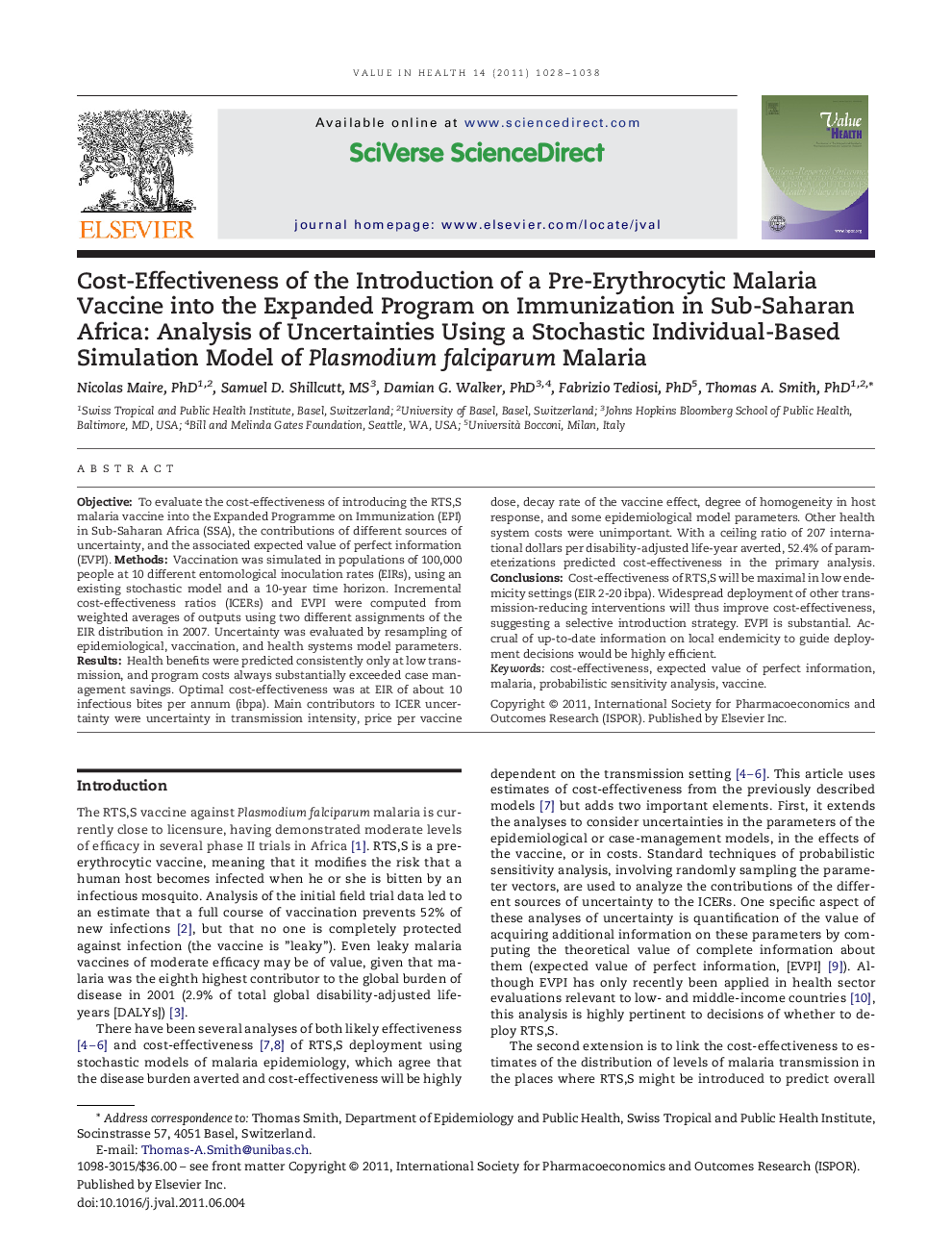| کد مقاله | کد نشریه | سال انتشار | مقاله انگلیسی | نسخه تمام متن |
|---|---|---|---|---|
| 991206 | 935590 | 2011 | 11 صفحه PDF | دانلود رایگان |

ObjectiveTo evaluate the cost-effectiveness of introducing the RTS,S malaria vaccine into the Expanded Programme on Immunization (EPI) in Sub-Saharan Africa (SSA), the contributions of different sources of uncertainty, and the associated expected value of perfect information (EVPI).MethodsVaccination was simulated in populations of 100,000 people at 10 different entomological inoculation rates (EIRs), using an existing stochastic model and a 10-year time horizon. Incremental cost-effectiveness ratios (ICERs) and EVPI were computed from weighted averages of outputs using two different assignments of the EIR distribution in 2007. Uncertainty was evaluated by resampling of epidemiological, vaccination, and health systems model parameters.ResultsHealth benefits were predicted consistently only at low transmission, and program costs always substantially exceeded case management savings. Optimal cost-effectiveness was at EIR of about 10 infectious bites per annum (ibpa). Main contributors to ICER uncertainty were uncertainty in transmission intensity, price per vaccine dose, decay rate of the vaccine effect, degree of homogeneity in host response, and some epidemiological model parameters. Other health system costs were unimportant. With a ceiling ratio of 207 international dollars per disability-adjusted life-year averted, 52.4% of parameterizations predicted cost-effectiveness in the primary analysis.ConclusionsCost-effectiveness of RTS,S will be maximal in low endemicity settings (EIR 2-20 ibpa). Widespread deployment of other transmission-reducing interventions will thus improve cost-effectiveness, suggesting a selective introduction strategy. EVPI is substantial. Accrual of up-to-date information on local endemicity to guide deployment decisions would be highly efficient.
Journal: Value in Health - Volume 14, Issue 8, December 2011, Pages 1028–1038